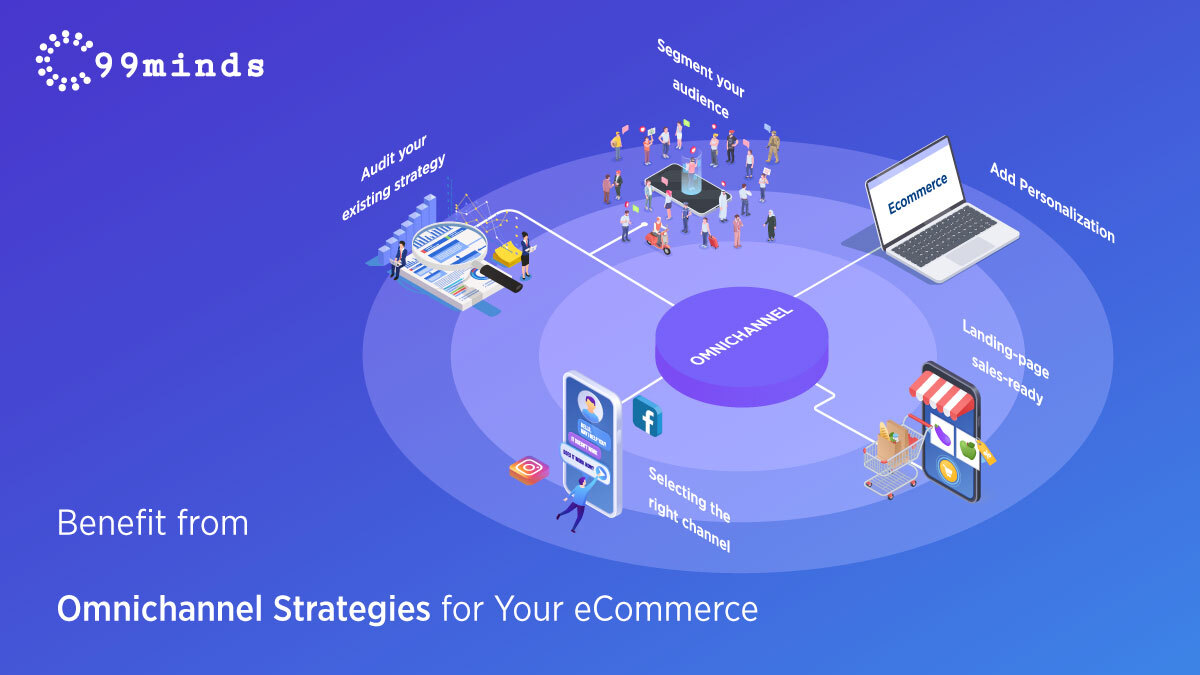
Mrudul

“Ultimately, customers don’t care about what channel they’re shopping in or about how we deliver them a product or service. They simply know they’re shopping with Walmart.”
The above statement is the best example for anyone who wants to understand omnichannel marketing in eCommerce.
To put it in the simplest words possible, it is all about providing a uniform shopping experience across several channels. Even though omnichannel in eCommerce is more like a given these days, you cannot jump head first into it without understanding what will work for you.
For an effective omnichannel eCommerce strategy, you need to find out where you stand, what your competitors and industry leaders are doing, and which is the most optimal omnichannel platform for you, based on your current circumstances.
Shopify’s definition of omnichannel– “[Omnichannel marketing] is about communicating in ways that are aligned with why they use a given channel and showing awareness of their individual stage in the customer life cycle. Customers can purchase wherever they are—rather than treating channels as independent silos, omnichannel accounts for the spillover between channels and offers customer experiences within and between channels.”
Customers these days expect 24*7 customer service, personalized communication, and a seamless omnichannel journey. If you don’t provide all of them, you are easy prey for your competitors.
Interesting omnichannel eCommerce stats:
Personalization is one aspect you cannot take lightly when building your eCommerce website. It helps your website with conversions and delivers a seamless experience across several channels. The magic potion of omnichannel strategy is not only to be relevant everywhere but also to make the end consumer feel appreciated and valued.
If you can predict what the consumers need, you will be better positioned to make it available for them. You will keep them satisfied and happy by providing them with what they need. Importantly, they will keep coming back for more.
Examples: Sending customers recommendations based on their previous purchasing history, browser history, geographical location, etc., can create a massive increase in your bottom line.
When you start developing a new omnichannel strategy for your business, it is imperative that you check where you stand currently. It will give you a clear idea of what works and what doesn’t. See how your present omnichannel strategies interact with the customers at each stage. Think from the POV of a customer when you plan to rejig your existing omnichannel strategy. Even minor changes can result in huge improvements. Therefore, you don’t want to miss out on any detail during your audits.
When you divide the customers based on common factors, you can send the right message at the right time to the right people. You can segment people based on their likes, dislikes, passion, hobbies, age, sex, occupation, designation, etc. The more granular your customer segmentation, the higher the chances of your omnichannel strategy’s success.
When a user lands on your website, you should make everything available so that they can go from discovery to purchase within a few seconds. The shopper should find it easy to access information about the product, shipping details, measurements, seller information, etc. They should even be able to see how many loyalty points they have, assuming they are registered.
The data about your product should be consistent across all channels- it is one of the most important things in an eCommerce omnichannel strategy. No matter which channel it is- social media sites, marketplaces, or even your eCommerce website, the data highlighted and the products presented should discuss similar specs.
You can get customers from any channel. From live chat on your website to a promotional ad on Facebook, your chosen channel could be from anywhere. While no channel works uniformly well for all businesses, the onus is on you to understand what works best for you.
If your target audience is men from the ages 20 to 30, then Instagram is an excellent channel for you. Instead, let’s assume you are targeting teenagers, then Snapchat might be your perfect choice. Select the channel based on buyer personas and other demographic factors. Before you start things, ensure that you have had a 360-degree study about how your customers behave. It will help run your day-to-day business and anticipate changes in customer behavior.
No matter how different each channel is, businesses should ensure that there is no change in the messaging at all. We are not only talking about the content describing the product but also with reference to the values and principles that your brand espouses. Brand identity elements such as logo, color palette, graphical elements, etc., should not change. There should be a consistent look and feel surrounding your brand, no matter which channels are used.
If your consumers were to find the color purple in your mobile app and your Instagram page uses completely different colors, they would leave the page immediately. You can’t even blame them as they would genuinely believe-” Oh, I landed on the wrong page.”
There was a time when eCommerce behemoths like Amazon and eBay could afford to provide an omnichannel experience. The tables have turned, and how! Thanks to technology, any business can make it possible. Customers want an omnichannel experience every time they shop. If you don’t give it to them, they will take the easiest route available for them- go to your competitor.
If you want to create campaigns for personalized promotions and build an omnichannel customer experience, then look no further than the 99minds platform. Our plug-and-play platform helps businesses create coupons, gift cards, discounts, referrals, loyalty programs, etc.